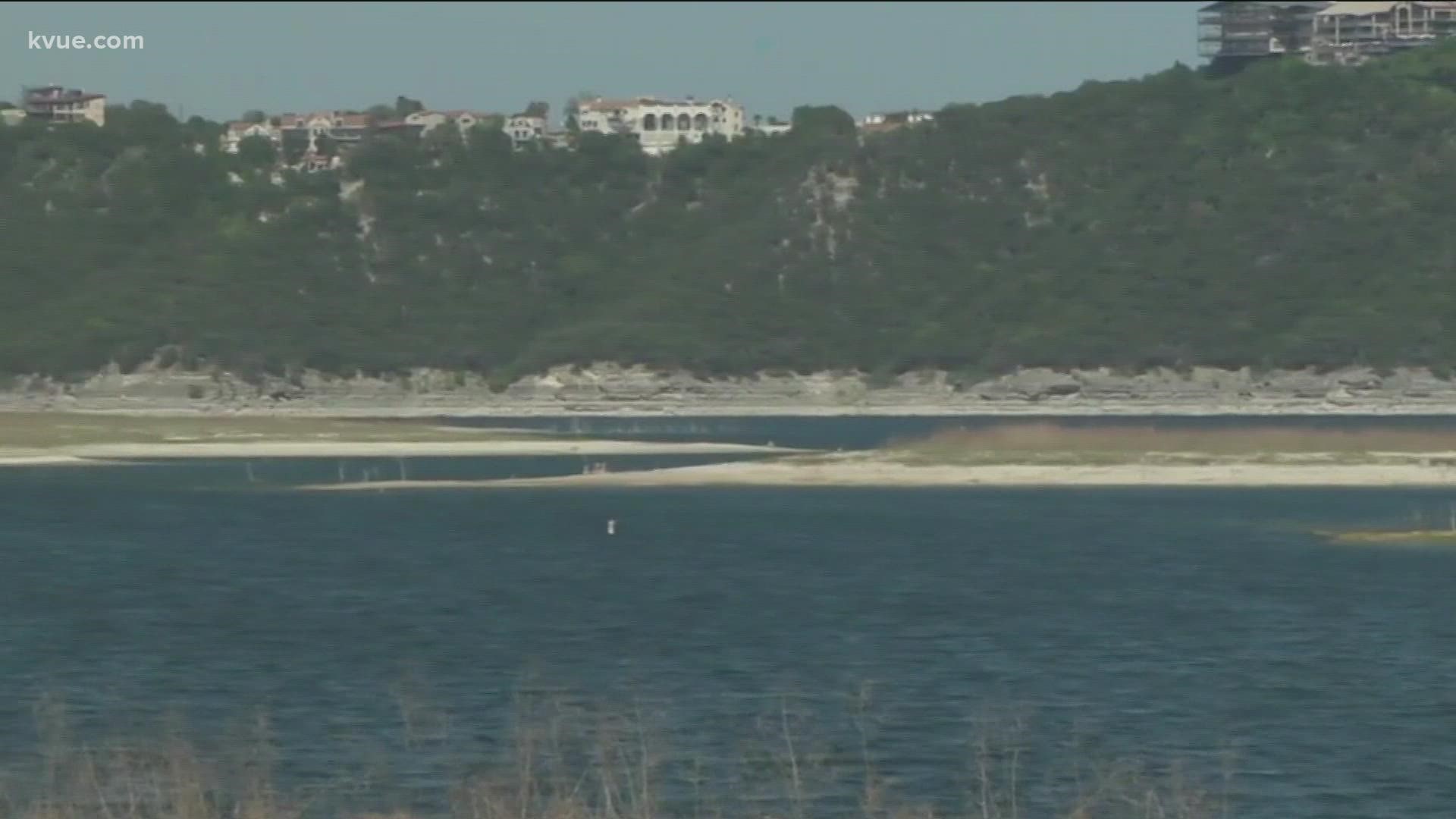AUSTIN, Texas — You don’t need an empty rain gauge to tell you it’s abnormally dry outside. At Horseshoe Bend at Lake Travis, recent weeks have seen the reappearance of what’s known as the Sometimes Islands.
When the lake is full, the islands are either under water or barely peek out. But lake levels are dropping, a sure indication that Central Texas – like most of the rest of the state – is in a drought.
South Texas farmer Russell Boening has seen droughts come and go from his ranch in Wilson County, southeast of San Antonio. He said this year’s dry spell reminds him how the catastrophic drought of 2011 began. That was the driest year in Texas history.
“We know, the droughts are going to happen, and you hope that you're somewhat prepared. You hope you're in a good relationship with your banker so that you can keep going,” he said.
Boening, who is president of the Texas Farm Bureau, said the farmers who planted crops this spring are well aware that they’re in for a tough year if the rains don’t come.
However, farmers aren't the only ones who will feel the impact. The use of water for recreation and tourism is widespread. Lake Travis sees boaters, park visitors and swimmers from all over Texas and the U.S.
This means recreation and tourism contribute tremendously to the local economy. However, Lake Travis is currently about 12 feet below normal levels. This, of course, drives people away, and restaurants host fewer people. Also, as the coves start to dry up, access to the lake also becomes more limited.
"The marinas become impacted because they have to start pushing the marinas out deeper into the water," said David Lindsay, VP of technical research and secretary at Central Texas Water Coalition. There's a large expense that they have to incur to maintain access. At some point, it gets extremely expensive. They have to do divers."
As of last week, 88% of the state experienced drought conditions. Exceptional drought, the most severe category, impacted 14% of the state. That’s the largest extent of exceptional drought since May 2014.
And the news video from that record-breaking drought a decade ago shows just how extreme things can get on the Highland Lakes west of Austin: scenes that forecasters say could happen again unless we get more rain.
Hydrologist Mark Wentzl said, historically, May is a big rainfall month in Texas. So, if we get a rainy May, that'll improve water levels in our reservoirs.
In the meantime, Lindsay said we should do what we can to protect our water supply.
"Lake Travis is an economic engine that supports the region," said Lindsay. "It's really important, and with everything that is coming in the growth, explosive growth here, we just need to be much more protective and mindful that this is a resource we're dependent on."
One thing Wentzl recommends is to limit the number of times you water your lawn. While its something small, it'll contribute greatly.
PEOPLE ARE ALSO READING:

